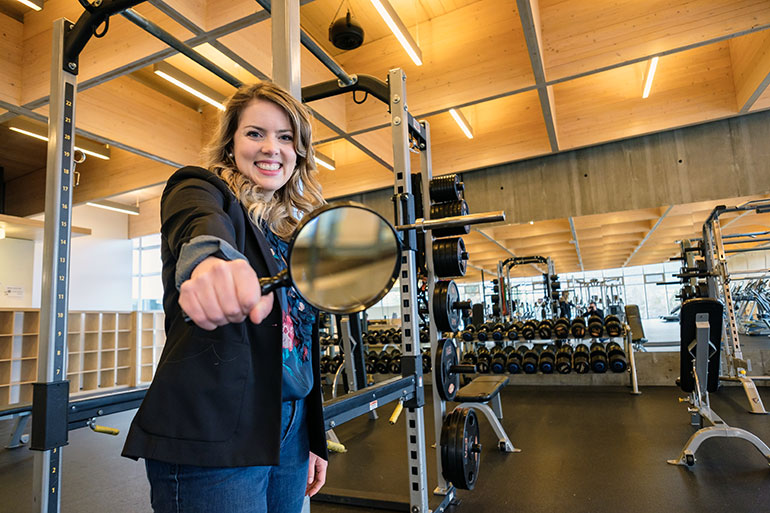It’s New Year’s and you have great aspirations. You’ve made resolutions, this is your year, and you’re going to make great strides to improve your lifestyle. But how?
UBC Okanagan Assistant Professor Heather Gainforth, who studies behaviour modification, has a strategy and can offer specific tips to help you nail your resolution. Gainforth teaches in the School of Health and Exercise Sciences and researches methods to help people engage in positive behaviours.

You use the analogy of solving a fictional murder mystery when it comes to changing behaviour. Can you explain this?
When a detective solves a crime, they have to assess the facts and consider which suspects had a motive. Did they have the capability, the opportunity and the motivation to commit the crime?
Behavioural scientists use a similar approach. We do our own detective work by talking to individuals about the reasons why they do not engage in the behaviour. To change behaviour you need the same three things. You need capability—you need to have the physical ability and knowledge of how to do the behaviour. You need opportunity—you need to have the time, resources and social groups that allow you to engage in the behaviour. Finally, you must have motivation—you need to see the benefits of the behaviour, have confidence and must want to make the change.
For example, your New Year’s resolution may be to go swimming twice a week. You may have the motivation but not know how to swim and you may not have a swim pass. Your culprit would be opportunity and capability. To begin swimming, you will need to address these barriers. You may need to take swimming lessons or ask a friend to help you learn. You would also need a swimming pass and make sure it fits in your budget.
If you don’t know the culprit, it is very difficult to find the right solution for you.
Other than setting a goal, what other strategies do you suggest?
There are many different ways to change your behaviour—research has identified more than 90 different techniques. That said, there are some techniques that consistently seem to help people change their behaviour.
One technique is setting a SMART goal. These goals are different because they require you to set a specific, measurable, attainable, realistic and time-based goal. Your goals should be challenging but still realistic—if you are thinking of starting a new exercise routine start small and build up. Your goals should be specific—set an exact date that you plan to quit smoking or specify exactly how you plan to change your diet.
Once you set a SMART goal, it is important to have specific plans for how you are going to change your behaviour and handle stressful situations. If your New Year’s resolution involves getting active, you need to plan exactly when, where and how you plan to exercise. If you want to quit smoking, this technique might involve you thinking about situations where you are likely to crave a cigarette and making a plan about how you are going to handle this situation.
Lastly, it is important to monitor your progress. You don’t know if you need to re-route your course of action if you do not know how successful your efforts have been. Track your behaviours daily either using pen or paper or using technology such as activity trackers or apps. This information provides the facts for your next mystery case because as you change, the ‘culprits’ affecting your behaviour will also change.
Is it ever too late to ‘get back in the saddle?’
Behaviour change is a long-term process of self-discovery. As you monitor your behaviour, you will likely find times where you ‘fall off the wagon’. Setbacks are normal and are to be expected.
What is important is that you treat yourself with self-compassion when you feel that you have failed and keep trying. Every time you do not engage in the behaviour is an opportunity to gather more clues and identify new culprits that are stopping you from engaging in the behaviour. And then, make a new plan for changing your behaviour.
Can we use these behaviour change techniques for other aspects of our lives?
Absolutely—capability, opportunity and motivation do not just influence our health behaviours but all our behaviours. If you think about behaviours you do regularly, you likely have capability, motivation and opportunity to make them work.
Behaviours are anything that you do that are observable. You might decide that you want to change the way you manage your finances, socialize with friends more or de-clutter your house. Whatever behaviour you want to change this New Year, remember to look at the facts and determine whether the culprit is capability, opportunity or motivation that is stopping you from living the life you want.
This article was originally published on UBC Okanagan News.
Speaking of years, Science World just celebrated 30!
Learn more about our initiatives, stories, history and how you've shaped our iconic dome over the past three decades.
